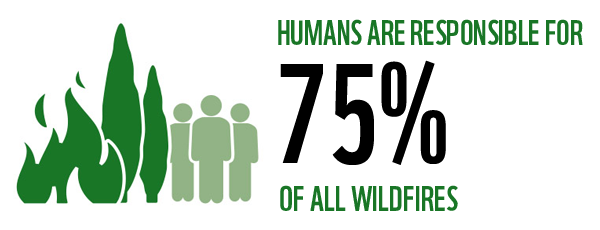The WWF is run at a local level by the following offices...
- WWF Global
- Adria
- Argentina
- Armenia
- AsiaPacific
- Australia
- Austria
- Azerbaijan
- Belgium
- Bhutan
- Bolivia
- Borneo
- Brazil
- Bulgaria
- Cambodia
- Cameroon
- Canada
- Caucasus
- Central African Republic
- Central America
- Chile
- China
- Colombia
- Croatia
- Democratic Republic of the Congo
- Denmark
- Ecuador
- European Policy Office
- Finland
Climate change and wildfires mutually reinforce each other, and the fires burning today in many parts of the world are bigger, more intense, and last longer than they used to.
In the Brazilian Amazon alone, forest fires in 2022 are at the highest level they’ve been in 12 years. These ferocious fires destroy vital ecosystems, impact economies and people, threaten property and livelihoods, and release millions of extra tonnes of carbon. The carbon dioxide released into the atmosphere from the California wildfires in 2020 was 25% more than California’s annual emissions from fossil fuels. And in summer 2022, carbon emissions from wildfires in the EU and UK reached the highest level since 2007.
If current trends continue, there will be devastating long-term consequences on people, wildlife and the climate.
Humans are responsible for around 75% of all wildfires. That means the solutions are also in our hand.
An increasing share of wildfires are due to human activity, intentional or otherwise. In the Northern Hemisphere, most fires are caused by negligence (e.g. burning rubbish and debris, industrial accidents, agricultural overspill etc.), and arson is also sometimes to blame. Persistent hotter and drier weather due to climate change further fuels fires.
In some tropical and subtropical regions, forest fires are mostly intentionally set for land-use change, clearing and preparing new areas for cultivation. In many of these regions, land conversion for agriculture and poor forest management are the main drivers behind the increase in intensity and frequency of fires.

Regardless of whether fires start naturally or are deliberately set, their overall impact has been growing in recent decades.
By examining three factors – surface burned, frequency and severity – the growing influence of climate change becomes obvious. The carbon released into the atmosphere by the fires further increases global heating, and the vicious circle gets worse. This establishes a positive feedback loop that amplifies the role of extreme hot dry weather in generating more frequent intense fires that in turn generate increased forest carbon emissions.
Ongoing deforestation and rising temperatures are projected to reach levels that would cause even the largest intact forest biomes to switch from net sink to net source of billions of tonnes of sequestered forest carbon.
The effects of wildfires linger long after the flames die down, hitting public health and wellbeing far into the future. Every year, there are an estimated 340,000 premature deaths from respiratory and cardiovascular issues attributed to wildfire smoke.
The increasing frequency and severity of wildfires pose a growing threat to biodiversity globally. Individuals, companies and public authorities also bear great economic costs.


Wildfires are a critical global issue that needs urgent solutions.
To have any chance of restricting the rise in global temperatures to 1.5°C in line with the Paris Agreement, more needs to be done to cut carbon emissions from forest fires, by governments, businesses, communities and individuals alike. The best place to start is to focus on the causes and the factors driving them.
We need to:
- Raise climate change ambition worldwide
- Improve Paris Agreement accounting for emissions from ‘non-anthropogenic’ fires
- Reinvest in prevention
- Halt deforestation
- Reinstate fire where it has been excluded from key landscapes
- Clarify governance, coordinate policies
- Use a science-based approach to risk and interventions
- Bring businesses on board
- Come together to fight forest fires
What WWF is doing

- We mobilised to help people and wildlife in need during the Australian and Amazon fires.
- WWF-Australia is working together with partners in the field to restore what was lost in the devastating fires of 2019-20 and protect remaining wildlife.
- In Colombia, WWF supports "Friends of the Forest" - a group of community leaders working to prevent wildfires around the Chiribiquete National Park, one of the Colombian Amazon most threatened areas by deforestation.
- WWF-Malaysia organised the XFire Innovation Challenge to seek scalable technological solutions to suppress large wildfires in Southeast Asia’s inland and peatland forests.
- WWF-Bolivia established a forest fire emergency program and has launched a petition calling for action. Support the campaign.
Fires, forests and the future: a crisis raging out of control?

